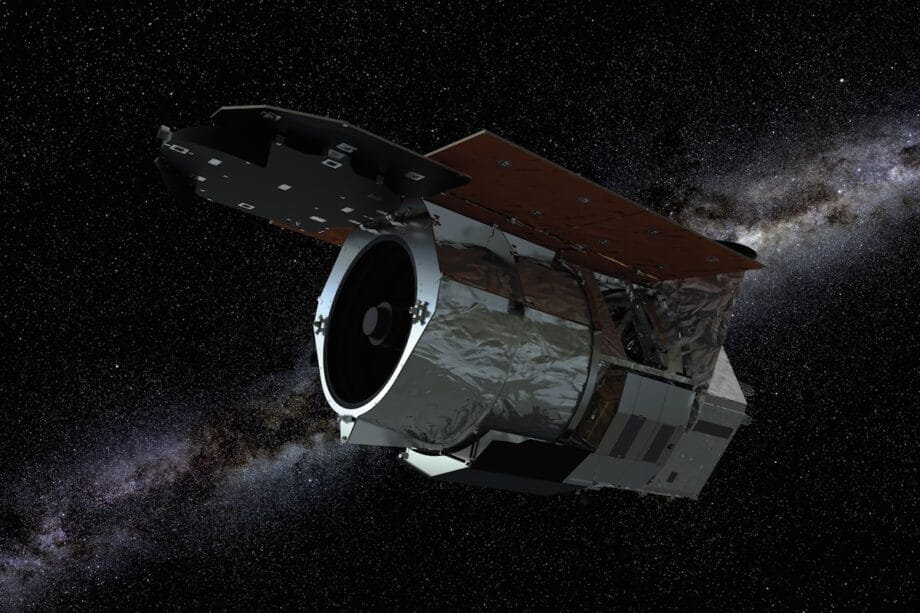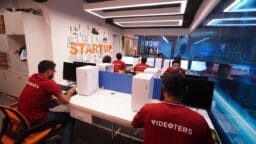NASA Enlists Katalyst to Preserve $500 Million Observatory
WASHINGTON (Reuters) – NASA has enlisted the services of startup Katalyst to avert a potential catastrophe involving a $500 million orbiting observatory that faces imminent danger of re-entry into Earth’s atmosphere.
This rapid-response initiative will facilitate the launch of a spacecraft designed specifically to extend the observatory’s operational trajectory in space, thereby showcasing advanced space-docking technology amid escalating U.S.-China space competition.
On Wednesday, the U.S. space agency announced that it has awarded Arizona-based Katalyst Space Technologies a contract worth $30 million. This funding will support the deployment of a modified variant of its “Link” spacecraft, aimed at the Neil Gehrels Swift Observatory, which has been dynamically observing distant galaxies and black holes since its inception in 2004, stationed in low-Earth orbit.
Spacecraft maneuverability and docking missions are becoming increasingly crucial, both for military applications and various satellite maintenance strategies. As geopolitical tensions rise between the U.S. and China, these advancements come to the fore, reflecting intense competition, particularly in the realm of lunar exploration and the acquisition of international partnerships.
The NASA observatory, also known as SWIFT, is currently positioned approximately 364 miles (585 kilometers) above Earth. Unfortunately, it is grappling with a deteriorating orbital position due to natural atmospheric drag, rendering it an optimal candidate for a docking demonstration. SWIFT has contributed significantly to astronomical discoveries over the years.
Lacking onboard propulsion that would enable altitude adjustments and devoid of attachment points for external spacecraft, SWIFT faces a grim prognosis. NASA scientists estimate a 90% likelihood that the observatory will incinerate upon re-entry into Earth’s atmosphere by late 2026.
“Our objective is to engage with an unprepared satellite that wasn’t originally intended for servicing,” Katalyst CEO Ghonhee Lee stated. He emphasized that the mission aims to demonstrate the capability to service any satellite, irrespective of its design limitations.
Lee further elaborated that for the SWIFT initiative, Katalyst will repurpose a spacecraft initially slated for an internal demonstration mission. Adjustments to the vehicle will commence next month, with a targeted launch set for May 2026.
Docking Challenges
A significant hurdle in the burgeoning sector of satellite servicing startups lies in the development of grappling or docking mechanisms that can interface with aging satellites like SWIFT, which were not engineered to accommodate spacecraft interactions.
Lee indicated that Katalyst undertook a comprehensive analysis of SWIFT’s designs, enabling the Link craft to incorporate a custom robotic mechanism.
Once in proximity to SWIFT, the craft will secure its grip by clamping onto small metal flanges used during the observatory’s pre-launch terrestrial transport.
Lee noted that the Pentagon is closely monitoring this mission; he hopes to partner with the U.S. Space Command for additional orbital maneuverability assessments post the SWIFT enhancement.
“While this is a NASA satellite, and fundamentally a civil space telescope, the ramifications for space warfare and superiority are quite substantial,” Lee remarked regarding the SWIFT mission.
Earlier this summer, China exhibited its capabilities by demonstrating two satellites in close formation flight. This followed a concerning 2022 incident in which a Chinese satellite successfully grappled and maneuvered another satellite, causing alarm among U.S. officials who fear such tactics could be employed against American spacecraft.

The Pentagon is striving to develop similar capabilities, though many of its initiatives remain shrouded in confidentiality.
Katalyst’s expansion into the in-space services sector follows its acquisition of Atomos Space in April. The company has invested $25 million into the Link spacecraft division, with Lee noting that their cost per spacecraft aims to be significantly lower than traditional satellite designs, which often run hundreds of millions of dollars.
“Our ambitions for the routine production of robotic spacecraft fall within a high single-digit to low double-digit million range,” Lee stated, withholding a precise figure.
Source link: Yahoo.com.






